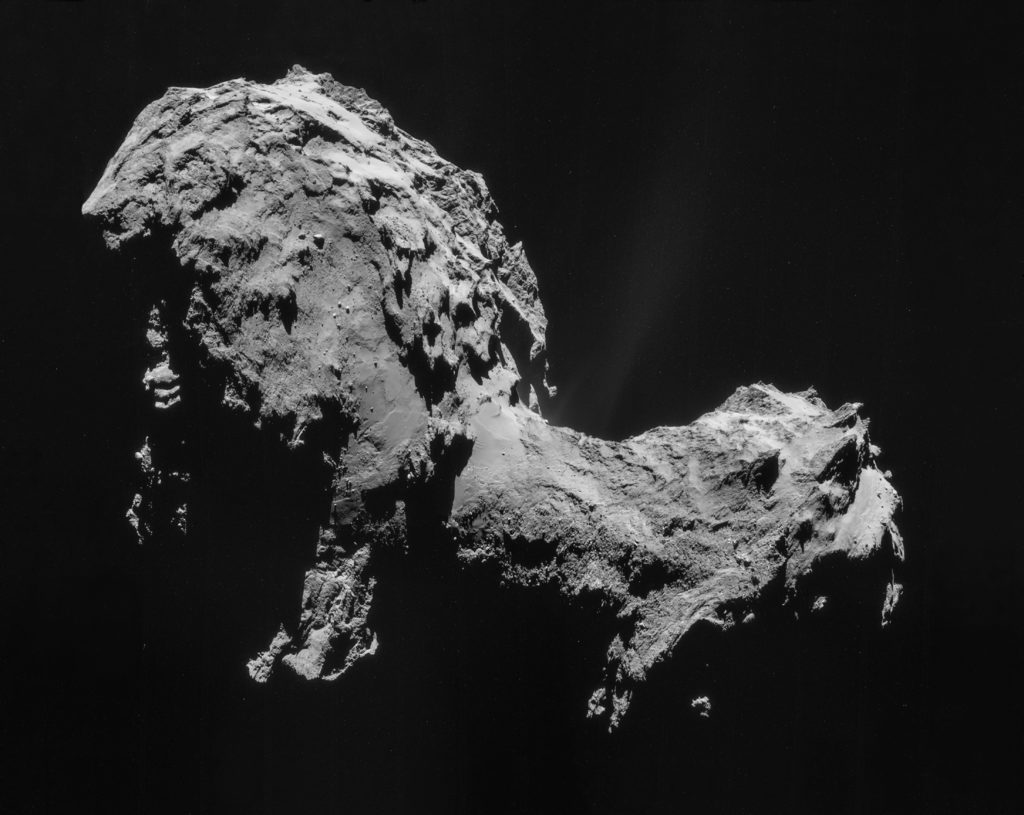La Glicina , aminoacido nello spazio (Experimenta et Hypotheses Chemica)

Figura 1: Protonation states of glycine, C2H5NO2.
By Ben Mills – Own work, Public Domain, https://commons.wikimedia.org/w/index.php?curid=6251738700
La presenza della Glicina fuori dal pianeta Terra fu confermata nel 2009 dopo analisi chimiche del materiale della cometa Wild 2 prelevato dal veicolo della NASA “Stardust” nel 2004. Nel 1970 , all’interno del meteorite Murchison furono individuati circa 100 aminoacidi. Nel 2016 la rivista “Science Advanced” riportò i dati analitici effettuata dallo spettrometro di massa della sonda spaziale Rosetta sulla cometa 67P/Churyumov-Gerasimenko e confermando la presenta della Glicina.

Figura 2: Structure of glycine
By NEUROtiker – Own work, Public Domain, https://commons.wikimedia.org/w/index.php?curid=1636637
La glicina nello spazio potrebbe esersi formata per reazione tra acqua, ammoniaca e metano per effetto della radiazione ultravioletta. La scoperta della glicina nelle comete rafforzò la teoria della panspermia, che afferma che gli “elementi costitutivi” della vita sono diffusi in tutto l’universo.

Figura 3: Mosaic of four images taken by Rosetta’s navigation camera (NAVCAM) on 19 September 2014 at 28.6 km (17.8 mi) from the centre of comet 67P/Churyumov–Gerasimenko. The images used for this mosaic were taken in sequence as a 2×2 raster over an approximately 20 minute period, meaning that there is some motion of the spacecraft and rotation of the comet between the images. The four individual full-frame images are also available as related images below. Note this mosaic has been rotated by 180 degrees and cropped. The mosaic has been put together using Microsoft ICE. This left a few small regions requiring slight exposure adjustments using Adobe LightRoom. The full image has then been lightly contrast enhanced to bring out the activity without increasing the background noise too much.
Di ESA/Rosetta/NAVCAM, CC BY-SA IGO 3.0, CC BY-SA 3.0-igo, https://commons.wikimedia.org/w/index.php?curid=36603034
Glycine, amino acid in space
The presence of Glycine outside the planet Earth was confirmed in 2009 after chemical analysis of the material of the comet Wild 2 taken from the NASA vehicle “Stardust” in 2004. In 1970, around 100 amino acids were found inside the Murchison meteorite. In 2016 the journal “Science Advanced” reported the analytical data carried out by the mass spectrometer of the space probe Rosetta on the comet 67P / Churyumov-Gerasimenko and confirming the present of the Glycine. Glycine in space could be formed by reaction between water, ammonia and methane due to ultraviolet radiation. The discovery of glycine in comets strengthened the panspermia theory, which states that the “constituent elements” of life are widespread throughout the universe.
Dr Riccardo ZANABONI (Esponente dello staff scientifico del Centro Italiano Ricerche)
By: C.I.R. Centro Italiano Ricerche
Fonti:
1)https://it.wikipedia.org/wiki/Glicina;
2)https://it.wikipedia.org/wiki/67P/Churyumov-Gerasimenko;
3) https://en.wikipedia.org/wiki/Glycine;
4)Reuters (18 August 2009). “Building block of life found on comet – Thomson Reuters 2009”. Retrieved 2009-08-18.
5) European Space Agency (27 May 2016). “Rosetta’s comet contains ingredients for life”. Retrieved 2016-06-05.
6) Snyder LE, Lovas FJ, Hollis JM, et al. (2005). “A rigorous attempt to verify interstellar glycine”. Astrophys J. 619 (2): 914–930. arXiv:astro-ph/0410335. Bibcode:2005ApJ…619..914S. doi:10.1086/426677
7) Staff. “Organic Molecule, Amino Acid-Like, Found In Constellation Sagittarius 27 March 2008 – Science Daily”. Retrieved 2008-09-16.
Figura 1: Protonation states of glycine, C2H5NO2.
By Ben Mills – Own work, Public Domain, https://commons.wikimedia.org/w/index.php?curid=6251738
Figura 2: Structure of glycine
By NEUROtiker – Own work, Public Domain, https://commons.wikimedia.org/w/index.php?curid=1636637
Figura 3: Mosaic of four images taken by Rosetta’s navigation camera (NAVCAM) on 19 September 2014 at 28.6 km (17.8 mi) from the centre of comet 67P/Churyumov–Gerasimenko. The images used for this mosaic were taken in sequence as a 2×2 raster over an approximately 20 minute period, meaning that there is some motion of the spacecraft and rotation of the comet between the images. The four individual full-frame images are also available as related images below. Note this mosaic has been rotated by 180 degrees and cropped. The mosaic has been put together using Microsoft ICE. This left a few small regions requiring slight exposure adjustments using Adobe LightRoom. The full image has then been lightly contrast enhanced to bring out the activity without increasing the background noise too much.
Di ESA/Rosetta/NAVCAM, CC BY-SA IGO 3.0, CC BY-SA 3.0-igo, https://commons.wikimedia.org/w/index.php?curid=36603034
